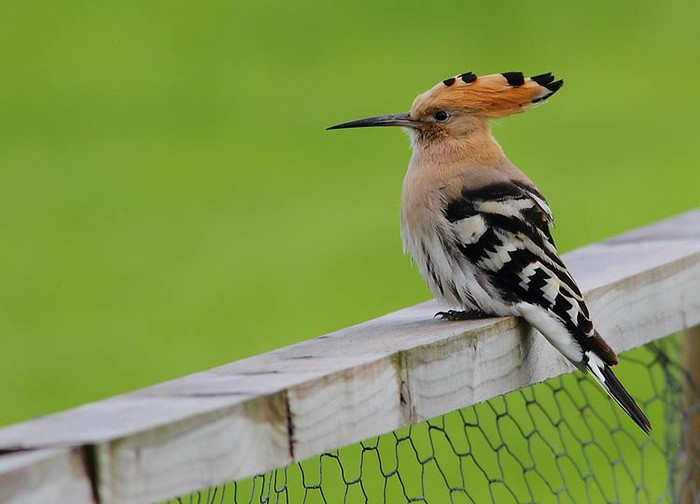Hoopoes protect embryos by 'painting' their eggs with bacteria
Researchers have discovered that Hoopoes cover their eggs with a self-produced secretion, loaded with mutualistic bacteria, which increases rates of successful hatching. The material, retained within a specialised structure in the eggshell, helps protect the eggs from infections and pathogens and so far Hoopoes are the only known species to exhibit this behaviour.

Researchers from the University of Granada and the Higher Council of Scientific Research (CSIC), and a number of other institutions, precluded several female Hoopoes form impregnating their eggs with the substance, self-produced by the Hoopoes so call uropygial gland.
By doing so they confirmed that the amount of pathogen bacteria that could be found inside the eggs which failed to hatch was higher in those nests in which they had experimentally precluded the females from using their secretion than in those where they were allowed to use this substance. They concluded that this secretion provides a barrier for the entry of pathogens towards the interior of the egg.
Specifically the study found that the Enterococci bacteria found in the secretion in that secretion are beneficial for the developing embryos, since successful hatches were directly related to the amount of these enterococci in the egg shells and in the secretions of the females. The more enterococci they had, the higher the rate in their successful hatching.
UGR zoology professor, Manuel Martín-Vivaldi, said the research showed "the important role played by bacteria, not just as infectious agents capable of producing diseases, but also as allies of animals and other living creatures in their struggle against disease, due to their extraordinary capacity to synthesise compounds with antimicrobial properties"
The scientist’s have confirmed that the Hoopoe’s uropygical gland and ts components are very different from those of other birds. This is to a large extent due to the action of the bacteria present in this particular gland.
Furthermore the research revealed that Hoopoes have developed an exceptional property in their eggs -- which has not so far been found in any other species of bird. This consists in the presence in the surface of many small depressions that do not completely penetrate the shell, and whose function appears to be the retention of this bacteria-carrying secretion that covers the egg.
Manuel Martín-Vivaldi et al
January 2015
Source
Manuel Martín-Vivaldi, Juan J. Soler, Juan M. Peralta-Sánchez, Laura Arco, Antonio M. Martín-Platero, Manuel Martínez-Bueno, Magdalena Ruiz-Rodríguez, Eva Valdivia. Special structures of hoopoe eggshells enhance the adhesion of symbiont-carrying uropygial secretion that increase hatching success.Journal of Animal Ecology, 2014; 83 (6): 1289 DOI: 10.1111/1365-2656.12243





